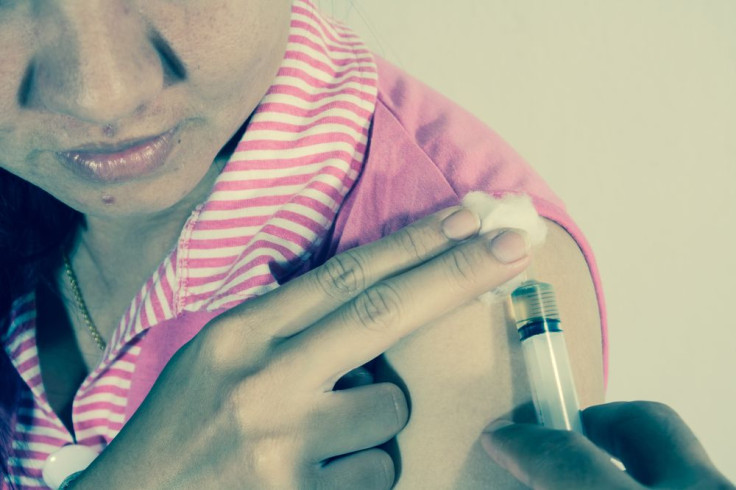FDA Approves Gardasil 9 HPV Vaccine For Protection Against 90% Of Cervical Cancers

Today, the Food and Drug Administration approved Gardasil 9 for the prevention of certain diseases caused by nine types of HPV. This is five more strains than covered by the previous Gardasil vaccine, and according to the FDA's statement, the vaccination is “a critical public health measure for lowering the risk” of certain cancers.
The human papillomavirus (HPV) is the most common sexually transmitted disease, infecting the mouth, throat, and genitals. The widespread disease is also the leading cause of a number of cancers, including cervical, anal, and throat.
Gardasil 9 offers protections against five more strains of HPV, something that its predecessor was unable to do. This means the vaccine now has the potential to prevent 90 percent of cervical, vulvar vaginal, and anal cancers, according to the FDA statement. It has been approved for use in females ages 9 through 26 and males 9 through 15. However, it’s been shown to be most effective in patients who have not been previously exposed to any form of HPV.
“Vaccination is a critical public health measure for lowering the risk of most cervical, genital, and anal cancers caused by HPV,” said Dr. Karen Midthun, director of the FDA’s Center for Biologics Evaluation and Research in a press release. “The approval of Gardasil 9 provides broader protection against HPV-related cancers.”
In clinical trials, Gardasil 9 was determined to be 97 percent effective in preventing cervical, vulvar, and vaginal cancers caused by the five additional HPV types, when compared against the original Gardasil vaccine. It was also found to be 79 percent effective in preventing anal cancer. These numbers were determined by measuring the antibody response to the vaccine in approximately 1,200 males and 2,800 females.
The shot is administered in three shots, with the second shot given two months later and the third shot given six months following that.
As for side effects, Gardasil 9’s safety was tested on 13,000 males and females, and the most common adverse reactions were injection site pain, swelling, redness, and headaches.
According to the Centers for Disease Control and Prevention, HPV causes nearly all cases of cervical cancer, 50 percent of vulvar cancer, 65 percent of vaginal cancers, 35 percent of penile cancers, 95 percent of anal cancer, and 60 percent of all cancers of the throat, tongue, and tonsils.
Although most types of HPV do not lead to cancer, the infection can also cause warts on different parts of the body.



























